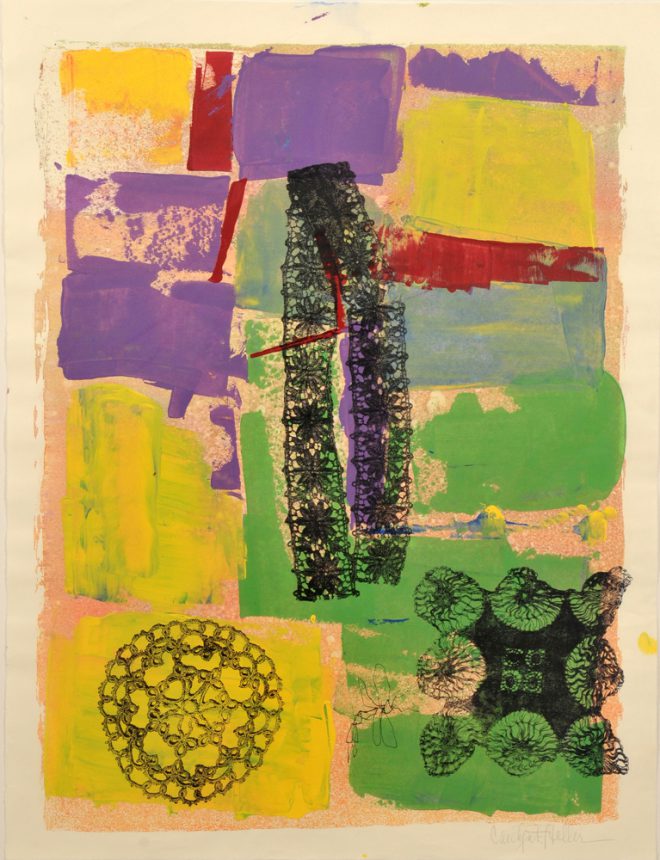Exhibition Pick: “Women of Newcomb”
Ann Hackett reflects on a history of female mentorship that’s being celebrated in an exhibition at Tulane University’s Newcomb Art Museum.

Carolyn Frohsin Heller, Untitled, 2001. Courtesy the Newcomb Art Museum, New Orleans.
“Women of Newcomb”
Newcomb Art Museum of Tulane University
Woldenberg Art Center
June 3–July 24, 2016
The Newcomb Art Museum celebrates its 20th anniversary by displaying recently acquired works by some of Newcomb College’s most prominent alumnae. Newcomb College was established in 1886 as the women’s college of Tulane University, and, after Hurricane Katrina, it was subsumed into a new coed undergraduate school. The five artists in the exhibition attended Newcomb at different times in the college’s 120-year history and worked in different media, but they are all connected by the opportunities their education afforded them.
Louise Grosz and Mary Alice Peak Reiss were both working as commercial illustrators and designers in the early 20th century. Grosz’s illustrations portray tall, elegant women in dresses and coats that presumably were available for purchase at local and national clothing retailers at the time. These drawings show that women were working creatively in advertising and fashion as early as the 1930s, decades before the fictional Peggy Olson took Sterling Cooper by storm in Mad Men.
Two silkscreen prints by Ida Kohlmeyer are composed of thick black lines that surround purple and red abstract shapes. These forms seem to be identifiable objects at first, but they disintegrate into bundles of color on further examination. The influence of the Abstract Expressionists, whom Kohlmeyer studied with in New York, is obvious in these prints. Kohlmeyer, in turn, went on to teach and influence Carolyn Frohsin Heller, whose work makes up almost half of “Women of Newcomb.” Three of Heller’s paintings from the 1990s—which include elements of her home in South Florida, brightly colored fish, trees, flowers, and suns, positioned inside an unsteady grid—echo Kohlmeyer’s abstract objects and bold outlines. Heller’s later paintings are nearly completely abstract, comprised of wide strokes of painted color overlaid with patterns of black ink.
This visual link between Kohlmeyer and Heller suggests a rarely told story of woman-to-woman artistic mentorship, one that also reminds us of Kohlmeyer’s relationship with Lynda Benglis—another prominent Newcomb graduate whose work is not included in this exhibition—and underscores the college’s important history of promoting women’s artistic education.



